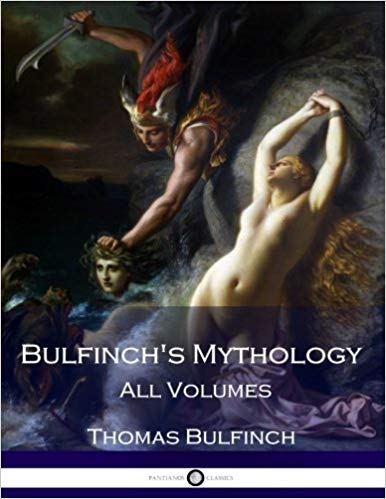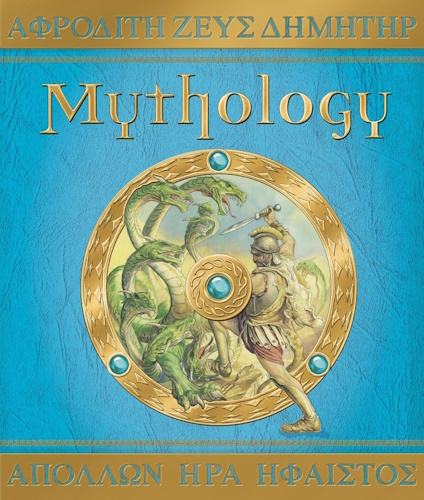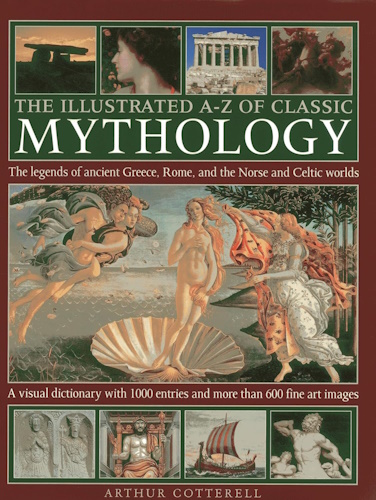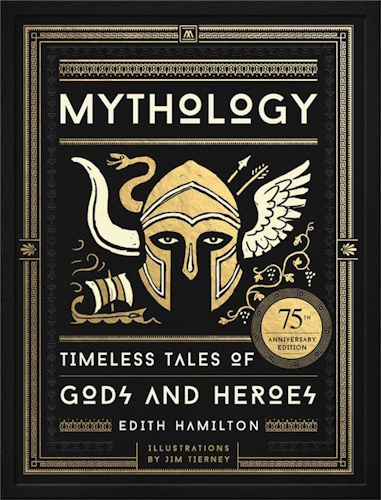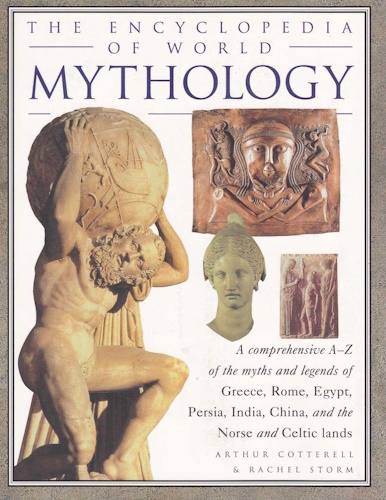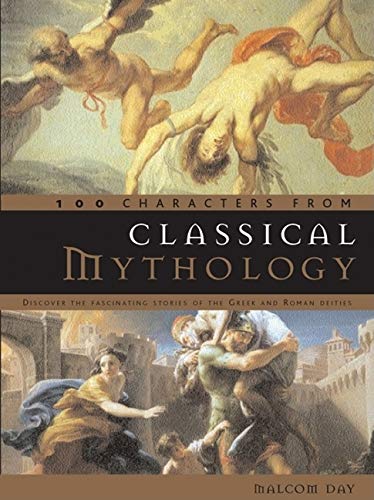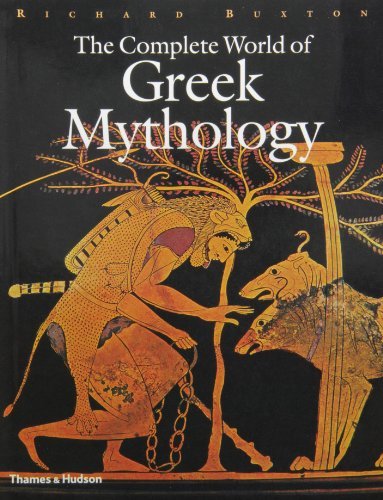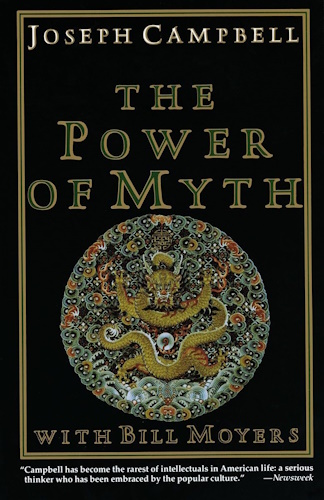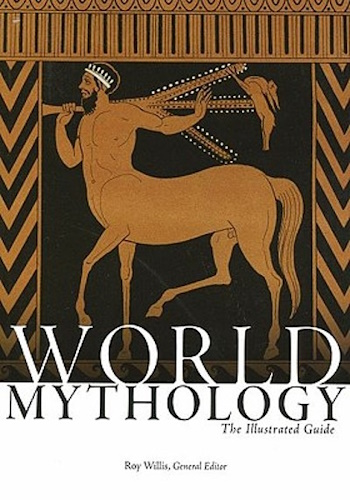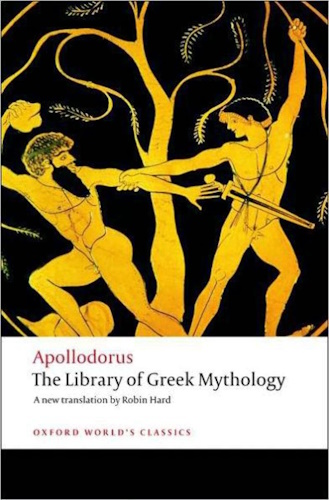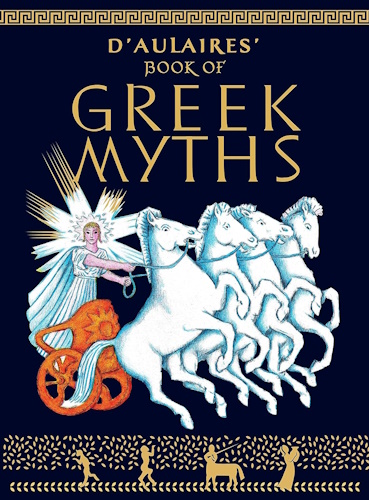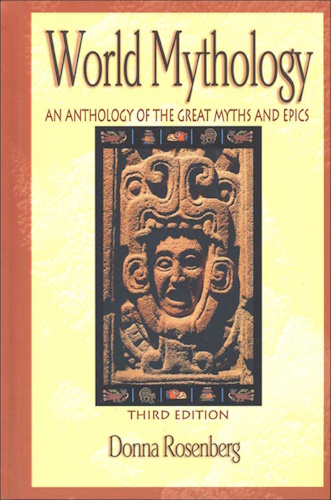
![]()
![]()
CHAPTER I.
INTRODUCTION.
THE religions of ancient Greece and Rome are extinct. The so-called divinities of Olympus have not a single worshipper among living men. They belong now not to the department of theology, but to those of literature and taste. There they still hold their place, and will continue to hold it, for they are too closely connected with the finest productions of poetry and art, both ancient and modern, to pass into oblivion.
We propose to tell the stories relating to them which have come down to us from the ancients, and which are alluded to by modern poets, essayists, and orators. Our readers may thus at the same time be entertained by the most charming fictions which fancy has ever created, and put in possession of information indispensable to every one who would read with intelligence the elegant literature of his own day.
In order to understand these stories, it will be necessary to acquaint ourselves with the ideas of the structure of the universe which prevailed among the Greeks- the people from whom the Romans, and other nations through them, received their science and religion.
The Greeks believed the earth to be flat and circular, their own country occupying the middle of it, the central point being either Mount Olympus, the abode of the gods, or Delphi, so famous for its oracle.
The circular disk of the earth was crossed from west to east and divided into two equal parts by the Sea, as they called the Mediterranean, and its continuation the Euxine, the only seas with which they were acquainted.
Around the earth flowed the River Ocean, its course being from south to north on the western side of the earth, and in a contrary direction on the eastern side. It flowed in a steady, equable current, unvexed by storm or tempest. The sea, and all the rivers on earth, received their waters from it.
The northern portion of the earth was supposed to be inhabited by a happy race named the Hyperboreans, dwelling in everlasting bliss and spring beyond the lofty mountains whose caverns were supposed to send forth the piercing blasts of the north wind, which chilled the people of Hellas (Greece). Their country was inaccessible by land or sea. They lived exempt from disease or old age, from toils and warfare. Moore has given us the "Song of a Hyperborean," beginning
"I come from a land in the sun-bright deep,Where golden gardens glow,
Where the winds of the north, becalmed in sleep,
Their conch shells never blow."
On the south side of the earth, close to the stream of Ocean, dwelt a people happy and virtuous as the Hyperboreans. They were named the AEthiopians. The gods favoured them so highly that they were wont to leave at times their Olympian abodes and go to share their sacrifices and banquets.
On the western margin of the earth, by the stream of Ocean, lay a happy place named the Elysian Plain, whither mortals favoured by the gods were transported without tasting of death, to enjoy an immortality of bliss. This happy region was also called the "Fortunate Fields," and the "Isles of the Blessed."
We thus see that the Greeks of the early ages knew little of any real people except those to the east and south of their own country, or near the coast of the Mediterranean. Their imagination meantime peopled the western portion of this sea with giants, monsters, and enchantresses, while they placed around the disk of the earth, which they probably regarded as of no great width, nations enjoying the peculiar favour of the gods, and blessed with happiness and longevity.
The Dawn, the Sun, and the Moon were supposed to rise out of the Ocean, on the eastern side, and to drive through the air, giving light to gods and men. The stars, also, except those forming the Wain or Bear, and others near them, rose the stream of Ocean. There the sun-god embarked in a winged boat, which conveyed him round by the northern part of the earth, back to his place of rising in the east. Milton alludes to this in his "Comus":
"Now the gilded car of dayHis golden axle doth allay
In the steep Atlantic stream,
And the slope Sun his upward beam
Shoots against the dusky pole,
Facing towards the other goal
Of his chamber in the east."
The abode of the gods was on the summit of Mount Olympus, in Thessaly. A gate of clouds, kept by the godesses named the Seasons, opened to permit the passage of the Celestials to earth, and to receive them on their return. The gods had their separate dwellings; but all, when summoned, repaired to the palace of Jupiter, as did also those deities whose usual abode was the earth, the waters, or the under-world. It was also in the great hall of the palace of the Olympian king that the gods feasted each day on ambrosia and nectar, their food and drink, the latter being handed round by the lovely goddess Hebe. Here they conversed of the affairs of heaven and earth; and as they quaffed their nectar, Apollo, the god of music, delighted them with the tones of his lyre, to which the Muses sang in responsive strains. When the sun was set, the gods retired to sleep in their respective dwellings.
The following lines from the "Odyssey" will show how Homer conceived of Olympus:
"So saying, Minerva, goddess azure-eyed,Rose to Olympus, the reputed seat
Eternal of the gods, which never storms
Disturb, rains drench, or snow invades, but calm
The expanse and cloudless shines with purest day.
There the inhabitants divine rejoice
For ever." Cowper.
The robes and other parts of the dress of the goddesses were woven by Minerva and the Graces, and everything of a more solid nature was formed of the various metals. Vulcan was architect, smith, armourer, chariot builder, and artist of all work in Olympus. He built of brass the houses of the gods; he made for them the golden shoes with which they trod the air or the water, and moved from place to place with the speed of the wind, or even of thought. He also shod with brass the celestial steeds, which whirled the chariots of the gods through the air, or along the surface of the sea. He was able to bestow on his workmanship self-motion, so that the tripods (chairs and tables) could move of themselves in and out of the celestial hall. He even endowed with intelligence the golden handmaidens whom he made to wait on himself.
Jupiter, or Jove (Zeus*), though called the father of gods and men, had himself a beginning. Saturn (Cronos) was his father, and Rhea (Ops) his mother. Saturn and Rhea were of the race of Titans, who were the children of Earth and Heaven, which sprang from Chaos, of which we shall give a further account in our next chapter.
* The names in parentheses are the Greek, the others being the Roman or Latin names.
There is another cosmogony, or account of the creation, according to which Earth, Erebus, and Love were the first of beings. Love (Eros) issued from the egg of Night, which floated on Chaos. By his arrows and torch he pierced and vivified all things, producing life and joy.
Saturn and Rhea were not the only Titans. There were others, whose names were Oceanus, Hyperion, Iapetus, and Ophion, males; and Themis, Mnemosyne, Eurynome, females. They are spoken of as the elder gods, whose dominion was afterwards transferred to others. Saturn yielded to Jupiter, Oceanus to Neptune, Hyperion to Apollo. Hyperion was the father of the Sun, Moon, and Dawn. He is therefore the original sun-god, and is painted with the splendour and beauty which were afterwards bestowed on Apollo.
"Hyperion's curls, the front of Jove himself."Shakespeare.
Ophion and Eurynome ruled over Olympus till they were dethroned by Saturn and Rhea. Milton alludes to them in "Paradise Lost." He says the heathens seem to have had some knowledge of the temptation and fall of man.
"And fabled how the serpent, whom they calledOphion, with Eurynome, (the wide-
Encroaching Eve perhaps,) had first the rule
Of high Olympus, thence by Saturn driven."
The representations given of Saturn are not very consistent; for on the one hand his reign is said to have been the golden age of innocence and purity, and on the other he is described as a monster who devoured his children.* Jupiter, however, escaped this fate, and when grown up espoused Metis (Prudence), who administered a draught to Saturn which caused him to disgorge his children. Jupiter, with his brothers and sisters, now rebelled against their father Saturn and his brothers the Titans; vanquished them, and imprisoned some of them in Tartarus, inflicting other penalties on others. Atlas was condemned to bear up the heavens on his shoulders.
* This inconsistency arises from considering the Saturn of the Romans the same with the Grecian deity Cronos (Time), which, as it brings an end to all things which have had a beginning, may be said to devour its own offspring.
On the dethronement of Saturn, Jupiter with his brothers Neptune (Poseidon) and Pluto (Dis) divided his dominions. Jupiter's portion was the heavens, Neptune's the ocean, and Pluto's the realms of the dead. Earth and Olympus were common property. Jupiter was king of gods and men. The thunder was his weapon, and he bore a shield called AEgis, made for him by Vulcan. The eagle was his favourite bird, and bore his thunderbolts.
Juno (Hera) was the wife of Jupiter, and queen of the gods. Iris, the goddess of the rainbow, was her attendant and messenger. The peacock was her favourite bird.
Vulcan (Hephaestos), the celestial artist, was the son of Jupiter and Juno. He was born lame, and his mother was so displeased at the sight of him that she flung him out of heaven. Other accounts say that Jupiter kicked him out for taking part with his mother in a quarrel which occurred between them. Vulcan's lameness, according to this account, was the consequence of his fall. He was a whole day falling, and at last alighted in the Island of Lemnos, which was thenceforth sacred to him. Milton alludes to this story in "Paradise Lost," Book I.:
"...From mornTo noon he fell, from noon to dewy eve,
A summer's day; and with the setting sun
Dropped from the zenith, like a falling star,
On Lemnos, the AEgean isle."
Mars (Ares), the god of war, was the son of Jupiter and Juno,
Phoebus Apollo, the god of archery, prophecy, and music, was the son of Jupiter and Latona, and brother of Diana (Artemis). He was god of the sun, as Diana, his sister, was the goddess of the moon.
Venus (Aphrodite), the goddess of love and beauty, was the daughter of Jupiter and Dione. Others say that Venus sprang from the foam of the sea. The zephyr wafted her along the waves to the Isle of Cyprus, where she was received and attired by the Seasons, and then led to the assembly of the gods. All were charmed with her beauty, and each one demanded her for his wife. Jupiter gave her to Vulcan, in gratitude for the service he had rendered in forging thunderbolts. So the most beautiful of the goddesses became the wife of the most ill-favoured of gods. Venus possessed an embroidered girdle called Cestus, which had the power of inspiring love. Her favourite birds were swans and doves, and the plants sacred to her were the rose and the myrtle.
Cupid (Eros), the god of love, was the son of Venus. He was her constant companion; and, armed with bow and arrows, he shot the darts of desire into the bosoms of both gods and men. There was a deity named Anteros, who was sometimes represented as the avenger of slighted love, and sometimes as the symbol of reciprocal affection. The following legend is told of him:
Venus, complaining to Themis that her son Eros continued always a child, was told by her that it was because he was solitary, and that if he had a brother he would grow apace. Anteros was soon afterwards born, and Eros immediately was seen to increase rapidly in size and strength.
Minerva (Pallas, Athene, the goddess of wisdom,) was the offspring of Jupiter, without a mother. She sprang forth from his head completely armed. Her favourite bird was the owl, and the plant sacred to her the olive.
Byron, in "Childe Harold," alludes to the birth of Minerva thus:
"Can tyrants but by tyrants conquered be,And Freedom find no champion and no child,
Such as Columbia saw arise, when she
Sprang forth a Pallas, armed and undefiled?
Or must such minds be nourished in the wild,
Deep in the unpruned forest, 'midst the roar
Of cataracts, where nursing Nature smiled
On infant Washington? Has earth no more
Such seeds within her breast, or Europe no such shore?"
Mercury (Hermes) was the son of Jupiter and Maia. He presided over commerce, wrestling, and other gymnastic exercises, even over thieving, and everything, in short, which required skill and dexterity. He was the messenger of Jupiter, and wore a winged cap and winged shoes. He bore in his hand a rod entwined with two serpents, called the caduceus.
Mercury is said to have invented the lyre. He found, one day, a tortoise, of which he took the shell, made holes in the opposite edges of it, and drew cords of linen through them, and the instrument was complete. The cords were nine, in honour of the nine Muses. Mercury gave the lyre to Apollo, and received from him in exchange the caduceus.*
* From this origin of the instrument, the word "shell" is often used as synonymous with "lyre," and figuratively for music and poetry. Thus Gray, in his ode on the "Progress of Poesy," says:
"O Sovereign of the willing Soul,Parent of sweet and solemn-breathing airs,
Enchanting shell! the sullen Cares
And frantic Passions hear thy soft control."
Ceres (Demeter) was the daughter of Saturn and Rhea. She had a daughter named Proserpine (Persephone), who became the wife of Pluto, and queen of the realms of the dead. Ceres presided over agriculture.
Bacchus (Dionysus), the god of wine, was the son of Jupiter and Semele. He represents not only the intoxicating power of wine, but its social and beneficent influences likewise, so that he is viewed as the promoter of civilization, and a lawgiver and lover of peace.
The Muses were the daughters of Jupiter and Mnemosyne (Memory). They presided over song, and prompted the memory. They were nine in number, to each of whom was assigned the presidence over some particular department of literature, art, or science. Calliope was the muse of epic poetry, Clio of history, Euterpe of lyric poetry, Melpomene of tragedy, Terpsichore of choral dance and song, Erato of love poetry, Polyhymnia of sacred poetry, Urania of astronomy, Thalia of comedy.
The Graces were goddesses presiding over the banquet, the dance, and all social enjoyments and elegant arts. They were three in number. Their names were Euphrosyne, Aglaia, and Thalia.
Spenser describes the office of the Graces thus:
"These three on men all gracious gifts bestowWhich deck the body or adorn the mind,
To make them lovely or well-favoured show;
As comely carriage, entertainment kind,
Sweet semblance, friendly offices that bind,
And all the complements of courtesy;
They teach us how to each degree and kind
We should ourselves demean, to low, to high,
To friends, to foes; which skill men call Civility."
The Fates were also three- Clotho, Lachesis, and Atropos. Their office was to spin the thread of human destiny, and they were armed with shears, with which they cut it off when they pleased. They were the daughters of Themis (Law), who sits by Jove on his throne to give him counsel.
The Erinnyes, or Furies, were three goddesses who punished by their secret stings the crimes of those who escaped or defied public justice. The heads of the Furies were wreathed with serpents, and their whole appearance was terrific and appalling. Their names were Alecto, Tisiphone, and Megaera. They were also called Eumenides.
Nemesis was also an avenging goddess. She represents the righteous anger of the gods, particularly towards the proud and insolent.
Pan was the god of flocks and shepherds. His favourite residence was in Arcadia.
The Satyrs were deities of the woods and fields. They were conceived to be covered with bristly hair, their heads decorated with short, sprouting horns, and their feet like goats' feet.
Momus was the god of laughter, and Plutus the god of wealth.
ROMAN DIVINITIES.
The preceding are Grecian divinities, though received also by the Romans. Those which follow are peculiar to Roman mythology:
Saturn was an ancient Italian deity. It was attempted to identify him with the Grecian god Cronos, and fabled that after his dethronement by Jupiter he fled to Italy, where he reigned during what was called the Golden Age. In memory of his beneficent dominion, the feast of Saturnalia was held every year in the winter season. Then all public business was suspended, declarations of war and criminal executions were postponed, friends made presents to one another, and the slaves were indulged with great liberties. A feast was given them at which they sat at table, while their masters served them, to show the natural equality of men, and that all things belonged equally to all, in the reign of Saturn.
Faunus,* the grandson of Saturn, was worshipped as the god of fields and shepherds, and also as a prophetic god. His name in the plural, Fauns, expressed a class of gamesome deities, like the Satyrs of the Greeks.
* There was also a goddess called Fauna, or Bona Dea.
Quirinus was a war god, said to be no other than Romulus, the founder of Rome, exalted after his death to a place among the gods.
Bellona, a war goddess.
Terminus, the god of landmarks. His statue was a rude stone or post, set in the ground to mark the boundaries of fields.
Pales, the goddess presiding over cattle and pastures.
Pomona presided over fruit trees.
Flora, the goddess of flowers.
Lucina, the goddess of childbirth.
Vesta (the Hestia of the Greeks) was a deity presiding over the public and private hearth. A sacred fire, tended by six virgin priestesses called Vestals, flamed in her temple. As the safety of the city was held to be connected with its conservation, the neglect of the virgins, if they let it go out, was severely punished, and the fire was rekindled from the rays of the sun.
Liber is the Latin name of Bacchus; and Mulciber of Vulcan.
Janus was the porter of heaven. He opens the year, the first month being named after him. He is the guardian deity of gates, on which account he is commonly represented with two heads, because every door looks two ways. His temples at Rome were numerous. In war time the gates of the principal one were always open. In peace they were closed; but they were shut only once between the reign of Numa and that of Augustus.
The Penates were the gods who were supposed to attend to the welfare and prosperity of the family. Their name is derived from Penus, the pantry, which was sacred to them. Every master of a family was the priest of the Penates of his own house.
The Lares, or Lars, were also household gods, but differed from the Penates in being regarded as the deified spirits of mortals. The family Lars were held to be the souls of the ancestors, who watched over and protected their descendants. The words Lemur and Larva more nearly correspond to our word Ghost.
The Romans believed that every man had his Genius, and every woman her Juno: that is, a spirit who had given them being, and was regarded as their protector through life. On their birthdays men made offerings to their Genius, women to their Juno.
A modern poet thus alludes to some of the Roman gods:
"Pomona loves the orchard,And Liber loves the vine,
And Pales loves the straw-built shed;
Warm with the breath of kine;
And Venus loves the whisper
Of plighted youth and maid,
In April's ivory moonlight,
Beneath the chestnut shade."
Macaulay, "Prophecy of Capys."
N.B.- It is to be observed that in proper names the final e and es are to be sounded. Thus Cybele and Penates are words of three syllables. But Proserpine and Thebes are exceptions and to be pronounced as English words.
-
Urantia Book, 44:0.11 - The Celestial Artisans
Never in your long ascendancy will you lose the power to recognize your associates of former existences. Always, as you ascend inward in the scale of life, will you retain the ability to recognize and fraternize with the fellow beings of your previous and lower levels of experience. Each new translation or resurrection will add one more group of spirit beings to your vision range without in the least depriving you of the ability to recognize your friends and fellows of former estates.
-
Princess Bride 1987 Wallace Shawn (Vizzini) and Mandy Patinkin (Inigo Montoya)
Vizzini: HE DIDN'T FALL? INCONCEIVABLE.
Inigo Montoya: You keep using that word. I do not think it means what you think it means. -
Urantia Book, 117:4.14 - The Finite God
And here is mystery: The more closely man approaches God through love, the greater the reality -- actuality -- of that man. The more man withdraws from God, the more nearly he approaches nonreality -- cessation of existence. When man consecrates his will to the doing of the Father's will, when man gives God all that he has, then does God make that man more than he is.
-
Urantia Book, 167:7.4 - The Talk About Angels
"And do you not remember that I said to you once before that, if you had your spiritual eyes anointed, you would then see the heavens opened and behold the angels of God ascending and descending? It is by the ministry of the angels that one world may be kept in touch with other worlds, for have I not repeatedly told you that I have other sheep not of this fold?"
-
Urantia Book, Foreword - 0:12.12 - The Trinities
But we know that there dwells within the human mind a fragment of God, and that there sojourns with the human soul the Spirit of Truth; and we further know that these spirit forces conspire to enable material man to grasp the reality of spiritual values and to comprehend the philosophy of universe meanings. But even more certainly we know that these spirits of the Divine Presence are able to assist man in the spiritual appropriation of all truth contributory to the enhancement of the ever-progressing reality of personal religious experience—God-consciousness.
-
Urantia Book, 1:4.3 - The Mystery Of God
When you are through down here, when your course has been run in temporary form on earth, when your trial trip in the flesh is finished, when the dust that composes the mortal tabernacle "returns to the earth whence it came"; then, it is revealed, the indwelling "Spirit shall return to God who gave it." There sojourns within each moral being of this planet a fragment of God, a part and parcel of divinity. It is not yet yours by right of possession, but it is designedly intended to be one with you if you survive the mortal existence.
-
Urantia Book, 1:4.1 - The Mystery Of God
And the greatest of all the unfathomable mysteries of God is the phenomenon of the divine indwelling of mortal minds. The manner in which the Universal Father sojourns with the creatures of time is the most profound of all universe mysteries; the divine presence in the mind of man is the mystery of mysteries.
-
Urantia Book, 1:4.6 - The Mystery Of God
To every spirit being and to every mortal creature in every sphere and on every world of the universe of universes, the Universal Father reveals all of his gracious and divine self that can be discerned or comprehended by such spirit beings and by such mortal creatures. God is no respecter of persons, either spiritual or material. The divine presence which any child of the universe enjoys at any given moment is limited only by the capacity of such a creature to receive and to discern the spirit actualities of the supermaterial world.
-
Urantia Book, 11:0.1 - The Eternal Isle Of Paradise
Paradise is the eternal center of the universe of universes and the abiding place of the Universal Father, the Eternal Son, the Infinite Spirit, and their divine co-ordinates and associates. This central Isle is the most gigantic organized body of cosmic reality in all the master universe. Paradise is a material sphere as well as a spiritual abode. All of the intelligent creation of the Universal Father is domiciled on material abodes; hence must the absolute controlling center also be material, literal. And again it should be reiterated that spirit things and spiritual beings are real.
-
Urantia Book, 50:6.4 - Planetary Culture
Culture presupposes quality of mind; culture cannot be enhanced unless mind is elevated. Superior intellect will seek a noble culture and find some way to attain such a goal. Inferior minds will spurn the highest culture even when presented to them ready-made.
-
Urantia Book, 54:1.6 - True And False Liberty
True liberty is the associate of genuine self-respect; false liberty is the consort of self-admiration. True liberty is the fruit of self-control; false liberty, the assumption of self-assertion. Self-control leads to altruistic service; self-admiration tends towards the exploitation of others for the selfish aggrandizement of such a mistaken individual as is willing to sacrifice righteous attainment for the sake of possessing unjust power over his fellow beings.
-
Urantia Book, 54:1.9 - True And False Liberty
How dare the self-willed creature encroach upon the rights of his fellows in the name of personal liberty when the Supreme Rulers of the universe stand back in merciful respect for these prerogatives of will and potentials of personality! No being, in the exercise of his supposed personal liberty, has a right to deprive any other being of those privileges of existence conferred by the Creators and duly respected by all their loyal associates, subordinates, and subjects.
-
Urantia Book, 54:1.8 - True And False Liberty
There is no error greater than that species of self-deception which leads intelligent beings to crave the exercise of power over other beings for the purpose of depriving these persons of their natural liberties. The golden rule of human fairness cries out against all such fraud, unfairness, selfishness, and unrighteousness.
